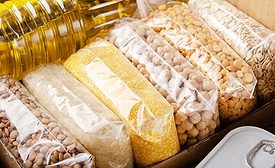Home » PFAS
Articles Tagged with ''PFAS''
The Window on PFAS is Closing 'PFAST'
State action on PFAS is ongoing, and many states are currently seeking to adopt new rules for PFAS in food packaging or expand the scope of existing laws
August 7, 2024
PFAS in Packaging: What the Food Industry Needs to Know
As PFAS risks become more understood, regulations more robust across jurisdictions, and litigation more common, it is critical that food and beverage companies understand their specific PFAS risks
June 28, 2024
Never miss the latest news and trends driving the food safety industry
eNewsletter | Website | eMagazine
JOIN TODAY!Copyright ©2025. All Rights Reserved BNP Media.
Design, CMS, Hosting & Web Development :: ePublishing












